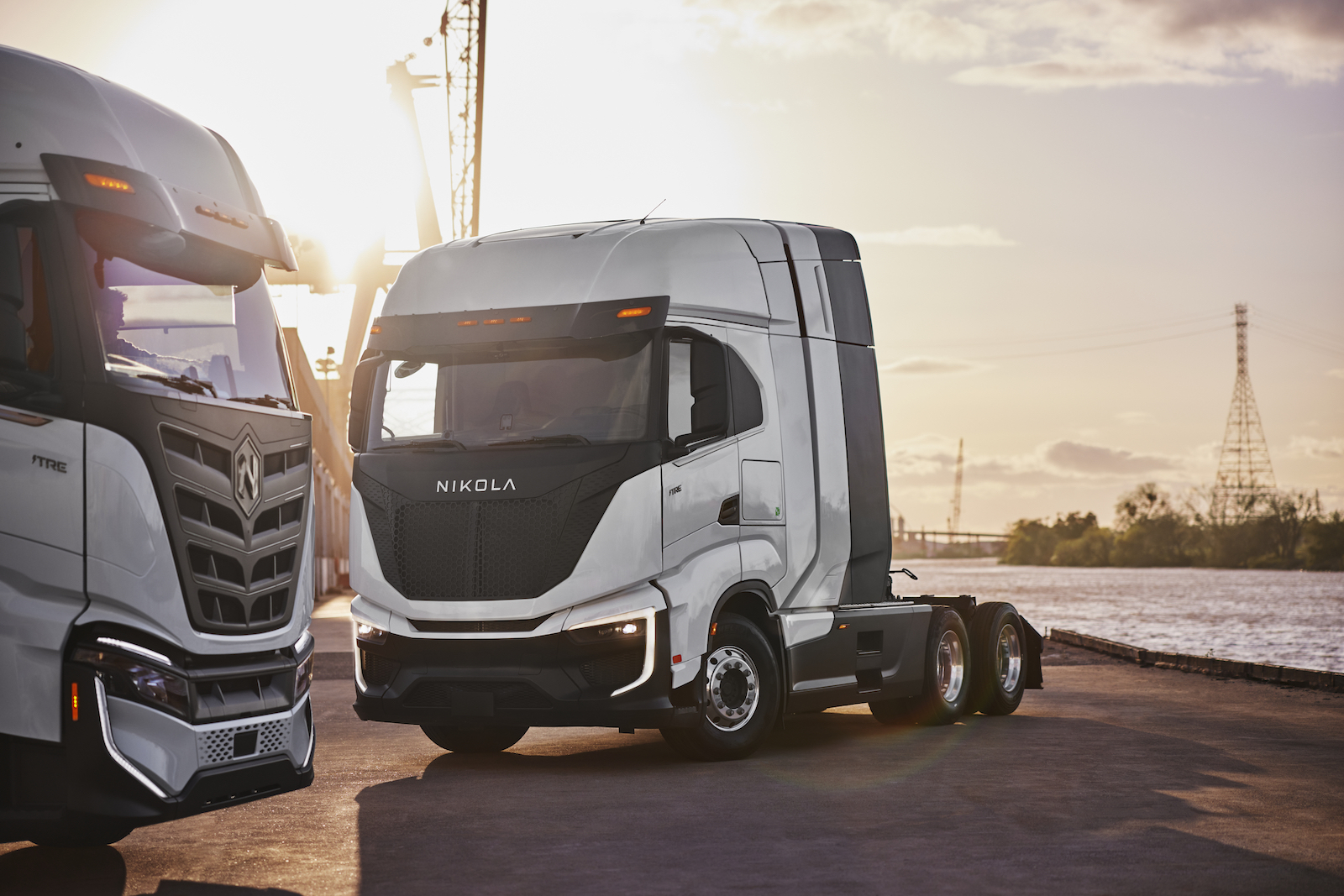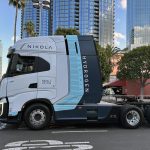Proponents claim hydrogen is even better than batteries as a way to the shift away from fossil fuels. The problem is how to produce “green” hydrogen that doesn’t create its own environmental issues. A pair of scientists may have found the answer — ironically, while they were searching for fossil fuels. Headlight.News has more.

Philipe de Donato, left, and Jacques Pironon may have discovered a cleaner way to produce hydrogen for fuel cells.
While Toyota Motor Co. has accelerated its EV program, the automaker is also moving forward with plans to expand its lineup of hydrogen fuel-cell vehicles. So are Honda and Hyundai, while startup Nikola is betting its own future on using fuel-cell technology to power up fleets of medium- and long-range trucks.
Proponents believe that a “hydrogen economy” could eventually win out over batteries as vehicles like the Toyota Mirai and Nikola Tre FCEV can travel further than EVs and refuel as quickly as gas- or diesel-powered vehicles. Skeptics counter that producing the necessary supply of hydrogen is not only costly but also requires the use of either fossil fuel or substantially more energy than needed to charge up batteries.

Many are lining up behind the use of hydrogen fuel cells, such as Nikola Motors with its Tre FCEV, as an alternative the battery-electric vehicles.
A promising fuel
But two scientists, working out of France’s National Centre of Scientific Research, made an inadvertent discovery that could make a hydrogen-based economy a much cleaner and more affordable reality. And they did so, ironically, while searching for sources of methane in the northeastern part of that country known as the Lorraine.
There are several ways in which hydrogen can be used as a power source. Mazda and BMW, for example, have experimented with burning it in internal combustion engines, instead of using gasoline, diesel or other fuels. The more common approach is to feed it into a fuel-cell “stack” where it combines with oxygen from the atmosphere. That creates just water vapor — and a stream of electrons that can be used to power electric motors. That’s why some proponents refer to fuel cells as “refillable batteries.”
The BMW iX5 and Toyota Mirai can deliver more than 400 miles per charge. Nikola is launching heavy trucks that can go more than 500 miles on a tank. And refueling can take as little as 20 minutes.
Hydrogen is everywhere — but not in a usable for,
The challenge is finding the necessary source of the ultra-lightweight gas to power those vehicles.

Officially, BMW claims the iX5 Hydrogen can launch from 0 to 60 in “under 6 seconds.” Top speed is rated at 115 mph.
Hydrogen is both the first element on the atomic scale and the most abundant element in the universe. It’s what stars are primarily made of. It’s everywhere — but, on Planet Earth, its normally tied up in compounds such as methane or petroleum, the hydrocarbons known as fossil fuels.
Cracking them to break out the hydrogen is a dirty process creating plenty of carbon dioxide. The other main alternative is to electrolyze water, applying energy to break it into its basic components, two parts hydrogen and one part oxygen. But that requires plenty of energy, whether renewable or supplied from fossil fuel plants. That’s why these sources are referred to as “brown” hydrogen.
Unfortunately, there’s virtually nowhere that hydrogen is found on its own.
An unexpected discovery
Or so most experts thought was the case. But new discoveries reveal that there may be some vast supplies hidden below our feet.
Jacques Pironon and Philipe de Donato, directors at the National Centre, set up in the Lorraine using new probes capable of analyzing what’s in the water flowing in deep underground formations. It was “not a real surprise” to find a small amount of pure hydrogen dissolved in the waters they found a couple hundred meters down, Pironon told CNN. But the deeper they drilled, the higher the levels of hydrogen. By 1,250 meters, or just over 4,100 feet, that reached 20%, a previously unheard of concentration.
When they ran calculations, the researchers estimated there could be anywhere from 6 million to 250 million metric tons of the gas in the Lorraine reservoir. And this “white” hydrogen, if it can be accessed, stored and then transported to pumps, could be the clean source of fuel for countless fuel-cell vehicles and other hydrogen-powered applications.
It takes a village
“If you had asked me four years ago what I thought about natural hydrogen, I would have told you ‘oh, it doesn’t exist,’” Geoffrey Ellis, a geochemist with the U.S. Geological Survey, told CNN.
Finding dissolved hydrogen in underground water supplies is not an entirely new discovery. The gas has been tapped to power a village in the West African country of Mali where it was accidentally discovered while digging a well. But where this was considered a rare phenomenon, the work of Pironon and De Donato suggests waters with high concentrations of dissolved hydrogen may be far more common than thought only recently.
How the pure gas is created remains something of a mystery, though scientists see several likely processes. “Serpentinization” appears to occur when water comes in contact with some iron-rich minerals that break it down. And “radiolysis” takes place when radioactive materials underground also break water into its component parts.
Hidden supplies could prove massive
There appear to be white hydrogen deposits all over the world, including the U.S. Ellis told the network there could be tens of billions of tons of the gas hidden underground.
“Most of this is almost certainly going to be in very small accumulations or very far offshore, or just too deep to actually be economic to produce,” he told CNN. But if just 1% can be found and produced, it would provide 500 million tons of hydrogen for 200 years, he added.
Powering up
The general rule of thumb is that a kilogram — or 2.2 pounds — of hydrogen is the equivalent of a gallon of gasoline. That means such supplies could power tens, perhaps hundreds of millions of vehicles.
Better yet, it could be produced for as little as $1 per kilogram before shipping and storage, according to some experts. Today, motorists in California, where most fuel-cell vehicles are being sold in the U.S., pay more than $10 per kilogram, making the gas cleaner, but far more expensive, than gasoline.
Several companies, such as Australia’s Gold Hydrogen, have begun drilling into hydrogen-rich aquifers. But it could take years to determine whether these sources of the gas can provide the commercial levels necessary to help make a hydrogen economy a reality.






0 Comments